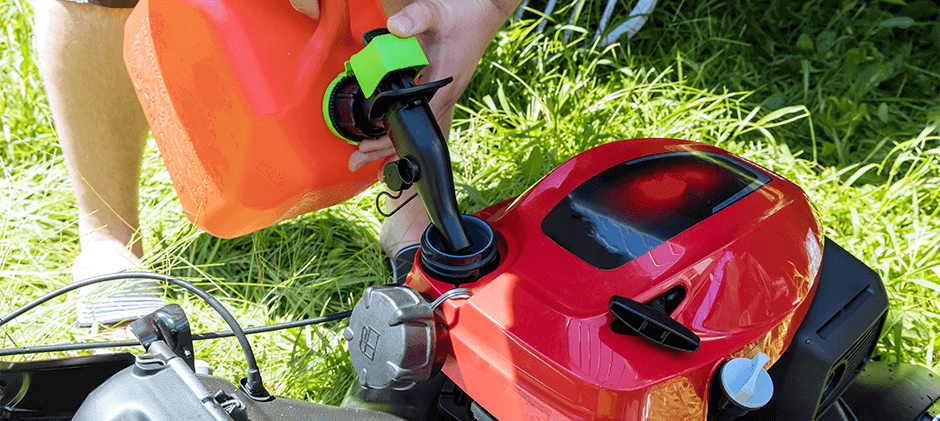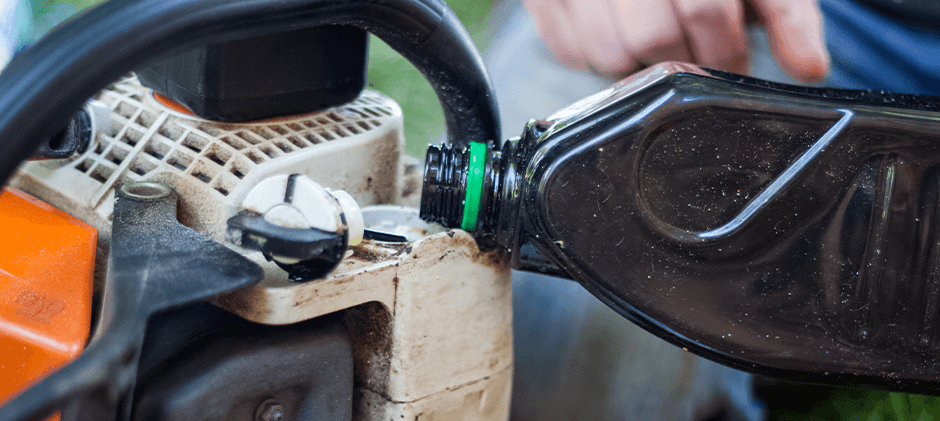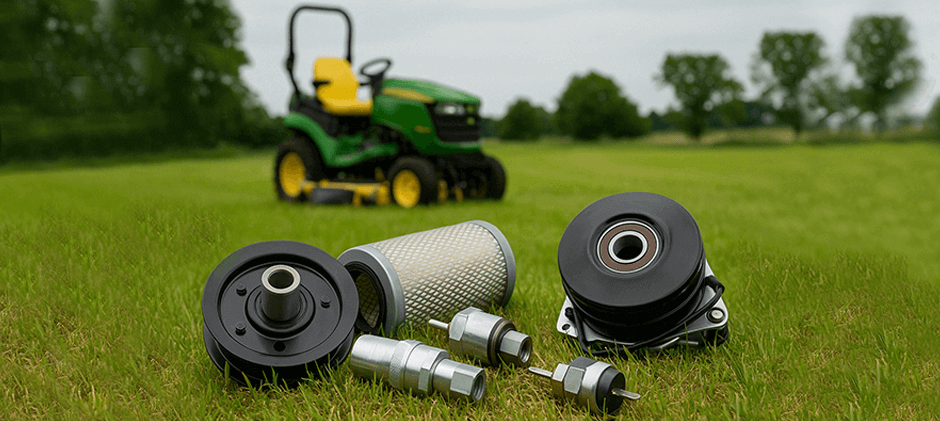The spring is a blooming season. Have you prepared your lawn mower for the busy season? The carburetor, one of many important lawn mower parts, can be easily impacted by gas. Understanding how to drain gas from a lawn mower is a crucial skill for proper lawn equipment maintenance, especially your carburetor. Leaving gasoline in the tank for extended periods, particularly over winter, can lead to stale fuel issues that prevent starting and potentially damage the engine. This guide explains the importance of draining fuel and provides safe, effective methods for doing so.

Why Draining Lawn Mower Gas is Important
Gasoline breaks down over time. This process happens faster because of the ethanol often mixed into today’s fuel. Ethanol actually attracts water. As the fuel gets old, it can separate and leave behind sticky, gummy stuff. This breakdown causes real trouble for lawn mowers. Old fuel just doesn’t burn right. That makes starting the mower very difficult. Also, that gummy gunk can easily block tiny openings inside the carburetor; this messes up the fuel and air mixture the engine needs, leading to the engine running poorly or maybe not starting at all. The water pulled in by ethanol can cause rust. This damages metal gas tanks and fuel lines. Trying to use old gas, or even just trying to start the engine with it, wears out the engine much faster. Your mower might not last nearly as long.
Safety First: Preparing to Drain Fuel
Handling gasoline demands extreme caution because it is highly flammable and its fumes are hazardous. Safety must be the top priority. To introduce a safe operation, you have to keep the following tip in mind:
- Work Safely: Always drain fuel outdoors or in a very airy spot to avoid dangerous fumes; never in closed spaces like garages unless they have great airflow.
- Prevent Fires: Make sure the engine is totally cool first. Keep flames, sparks (even static!), pilot lights, and smoking far away from your work area.
- Protect Yourself & Prevent Accidents: Use only approved gas cans. Wear nitrile gloves and safety glasses. Crucially, disconnect the spark plug wire to stop the engine from accidentally starting.

Methods for Draining Lawn Mower Gas
There are several effective ways to remove old gas from the lawn mower. The best method often depends on your mower’s design and your comfort level with basic mechanics.
Method 1: Using a Siphon Pump
Here is the answer to the question, how to drain gas from a lawn mower with a Siphon pump. A siphon pump is often the cleanest way. It’s usually the simplest, too. These pumps let you move the gas right from the mower tank into your approved gas can with very little mess; they come in hand-pump styles or battery-powered ones. Here is the easy step-by-step guide:
- Place the lawn mower on a level surface, slightly elevated if needed, to position the fuel container lower than the tank.
- Insert the siphon pump’s intake hose into the mower’s fuel tank, ensuring it reaches the bottom.
- Place the output hose securely into the approved fuel container.
- Operate the pump according to its instructions (usually squeezing a bulb or pressing a button) to start the fuel flow.
- Monitor the process until the tank is empty.
- Carefully remove the hoses, minimizing spills.
Method 2: Disconnecting the Fuel Line
You may ask, what if I don’t siphon? Don’t worry, this method only involves taking off the small hose that carries gas from the tank to the engine part called the carburetor. Here is what you do:
- Locate the fuel line, typically a rubber hose running from the bottom of the fuel tank towards the engine/carburetor.
- Identify the clamp securing the hose to the tank outlet or fuel filter.
- Place your approved fuel container securely beneath this connection point.
- Using pliers, loosen or release the clamp and gently slide it up the hose.
- Carefully twist and pull the fuel line off the tank nipple or filter. Be prepared for fuel to flow immediately.
- Allow the tank to drain completely.
- Once empty, reattach the fuel line securely and reposition the clamp.
Method 3: Running the Engine Dry
Guess what is the easiest way? You could just let the mower run until it drains all the gas. That may sound crazy, and it is not usually the best way because some old fuel might get left behind in the carburetor bowl, and that can still cause problems down the road. However, it’s something you can do if using a siphon or taking off the fuel line isn’t possible for you.
- Start the lawn mower in a safe, open area.
- Let the engine run until it consumes all the fuel in the tank and shuts off automatically.
Note: This method doesn’t remove fuel that might have already degraded, and it can sometimes be difficult to restart the mower later if the carburetor isn’t perfectly clean.
Here’s a quick comparison:
| Method | Pros | Cons | Best For |
|---|---|---|---|
| Siphon Pump | Clean, relatively easy, minimal tools | Requires purchasing a siphon pump | Most users, various mower types |
| Disconnecting Line | Thorough draining, no extra tools needed | Requires locating/accessing fuel line, potential spills | Users comfortable with basic mechanics |
| Running Dry | Simple, no tools or disassembly | May leave fuel in carburetor, less thorough | Quick draining before short storage (use caution) |
Proper Disposal of Old Gasoline
Old gasoline is classified as hazardous waste and must be disposed of correctly. Never pour it down a drain, onto the soil, or dispose of it with regular household trash, as this harms the environment and is often illegal. The correct procedure involves checking with your local authorities. Contact your city or county waste management service or local fire department to learn about the specific gasoline disposal regulations and options in your area. Many communities operate hazardous waste collection facilities or schedule special collection days where residents can safely drop off old fuel and other hazardous materials. While some anecdotal advice suggests diluting very small amounts of slightly old gas in a car’s fuel tank, this is risky and generally discouraged due to potential engine harm. Always follow official disposal guidelines.
When Should You Drain the Gas?
Draining the fuel tank is a key preventative maintenance step, particularly recommended before any extended period of non-use. The most common time is at the end of the mowing season, before putting the mower away for winter storage (typically any period longer than 30 days). You should also drain the fuel before any other long-term storage, when transporting the mower (to prevent spills and comply with regulations), or before performing major service or repairs, especially if the work requires tipping the mower or accessing fuel system components. As an alternative for shorter storage periods (up to a few months), adding a quality fuel stabilizer to fresh gasoline can slow down fuel degradation. However, stabilizers cannot rejuvenate fuel that is already stale. For guaranteed prevention of fuel-related issues during storage, draining the tank remains the most reliable method.
Frequently Asked Questions (FAQ)
How Long Can Gas Sit in a Lawn Mower Before It Goes Bad?
A: Gasoline can start to degrade in as little as 30 days, especially ethanol blends. For storage longer than a month, it’s best to either drain the fuel or use a fuel stabilizer with fresh gas.
Can I Just Use Fuel Stabilizer Instead of Draining the Gas?
A: Yes, for storage periods up to several months, adding fuel stabilizer to fresh gas can prevent degradation. However, it won’t fix gas that’s already old or contaminated. Draining is often considered the most foolproof method for long-term storage (e.g., over winter).
What If I Spill Some Gasoline While Draining?
Immediately clean up spills using absorbent materials like rags, sawdust, or cat litter. Allow fumes to dissipate completely before storing the soaked materials. Dispose of the contaminated materials according to your local hazardous waste guidelines – do not put them in regular trash.
Is it Okay to Leave the Carburetor Empty After Draining?
Yes, draining the tank and running the engine briefly (if using the disconnect method or siphon) until it stops helps clear fuel from the carburetor bowl, which is ideal for storage. An empty, dry fuel system is less prone to corrosion and deposit buildup.
Can I Reuse the Drained Gasoline in My Car?
It’s generally not recommended. Old, potentially contaminated gasoline can cause problems in modern vehicle engines. It’s safest to dispose of the old fuel properly through designated hazardous waste channels.

Conclusion
Now you have learned how to properly get rid of gas for your lawn mower. Don’t forget to keep yourself safe and dispose of old gasoline in an environmentally friendly way. Taking the time to properly drain the gas from your lawn mower is a simple yet effective way to prevent frustrating starting problems and protect the longevity of your engine, especially before winter storage. Whether you choose to use a siphon, disconnect the fuel line, or (cautiously) run the engine dry, following safe procedures is paramount. Always remember the importance of responsible gasoline disposal. If maintenance reveals worn-out components, know that we at Fridayparts are here to help. For reliable replacement lawn mower parts, including fuel system components, visit Fridayparts to keep your equipment in top condition season after season!
